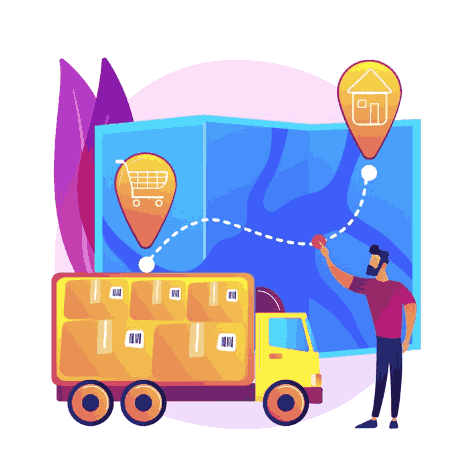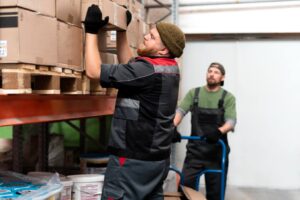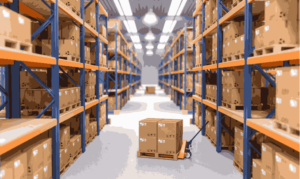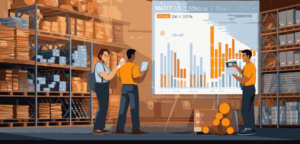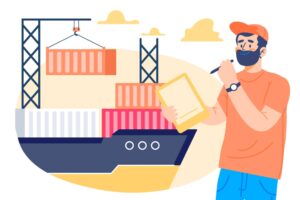Reverse logistics refers to the reverse of the conventional flow in the supply chain, where products are transported from the end consumer back to the manufacturer. This facet of supply chain management encompasses various activities such as managing returns, refurbishing, recycling, and disposal. It plays a crucial role in handling product returns due to reasons like damage, seasonal inventory fluctuations, restocking, salvage, recalls, or excess inventory.
What is Reverse Logistics?
Reverse logistics is a category within supply chain management that involves the movement of goods from customers back to sellers or manufacturers. Following the receipt of a product by a customer, processes like returns or recycling necessitate the implementation of reverse logistics.
Initiating from the end consumer, the reverse logistics process moves in the opposite direction through the supply chain, either from the distributor to the manufacturer or directly from the end consumer to the distributor. Additionally, reverse logistics encompasses procedures where the end consumer takes responsibility for the final disposal of the product, which may involve recycling, refurbishing, or resale.
When is reverse logistics applied?
Reverse logistics is utilized by organizations when products travel backward through the supply chain, returning from their destination to the seller and potentially even back to the suppliers. The primary objective is to either recover value from the product or appropriately dispose of it. Globally, returns contribute to an annual value of nearly a trillion dollars, a figure that has seen a notable increase with the expansion of e-commerce.
The goals of reverse logistics encompass both the recovery of value and the establishment of repeat customer relationships. Compared to in-store purchases, where less than 10% are returned, online orders experience return rates of at least 30%. Forward-thinking companies leverage reverse logistics not only to manage returns efficiently but also to cultivate customer loyalty, encourage repeat business, and mitigate losses associated with return processes.
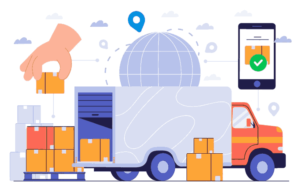
Reverse Logistics versus Conventional Logistics
In traditional logistics, the flow of products begins with suppliers and progresses to a factory or distributor before reaching retailers and customers. Conversely, reverse logistics management initiates at the consumer level and, moving in the opposite direction, facilitates the return of products to any point within the supply chain.
Well-designed supply chains are adaptable to changes and can accommodate various reverse logistics requirements. This reversal process allows products to be returned either one step back in the chain or directly to the original supplier. Additionally, returned products can be redirected to regular sales channels or discount outlets, such as liquidators.
The Reverse Logistics Process
Reverse logistics entails the movement of goods at least one step backward from the traditional endpoint of the supply chain. This procedure incorporates various plans and controls, with some companies opting to delegate this task to external entities.
The reverse logistics process encompasses the management of product returns and the acquisition of excess goods and materials. It also involves handling leases and refurbishments. The specifics of reverse logistics vary across industries, with distinct economic incentives driving efforts to enhance reverse logistics management.
For instance, in the beverage industry, the reverse logistics process focuses on the utilization of empty tap containers. Beverage production companies aim to reclaim the value of these containers by reusing them, necessitating meticulous planning of transportation, effective management of shipping loads, and container cleaning.
In the construction sector, reverse logistics involves the transportation and recycling of salvaged materials to new sites. As the construction industry increasingly adopts sustainable practices to minimize waste, there exists an opportunity for cost savings through the implementation of reverse logistics.
In the food industry, reverse logistics is responsible for the return of packaging materials and pallets. Companies also grapple with managing rejected food shipments, which pose logistical challenges due to potential delays leading to food spoilage and concerns about tampering. To address these challenges, the Reverse Logistics Association is developing secure, quick, reliable, login (SQRL) codes on packaging to provide detailed product information.
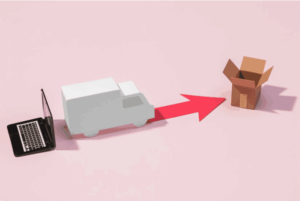
5 Steps to Effective Reverse Logistics
Handle the Return
Initiate the return process when a customer expresses the intention to return a product. This step involves obtaining return authorization and assessing the product’s condition. It also includes tasks such as scheduling return shipments, approving refunds, and replacing defective items.
Manage Returns
Upon the arrival of a returned product at your facility or centralized processing center, conduct a thorough inspection and categorize it based on its return category. (Note: With optimized reverse logistics, you should have predetermined destinations for products before their arrival.) Organize products into disposition options, including fixing, reselling as new, reselling as a return, recycling, scrapping, or refurbishing.
Facilitate Continuous Movement of Returns
Minimize daily waste by directing repairable items to the repair department.
Repair
After evaluating the returned item or equipment to determine repair feasibility, transfer it to the repair area. If repair is not feasible, sell any salvageable parts.
Recycle
Items or components that cannot be fixed, reused, or resold should be directed to the recycling area.
The Elements of Reverse Logistics
Various forms of reverse logistics center around the management of returns, return policies and procedures (RPP), and encompass aspects like remanufacturing, packaging, handling unsold goods, and addressing delivery issues. Additionally, other facets of reverse logistics pertain to leases, repairs, and product retirement.
Returns Management
This process involves the handling of product returns from customers or the proactive avoidance of returns. These activities should be characterized by speed, control, visibility, and simplicity. A company is often evaluated based on its efficiency in managing returns and the effectiveness of its return policies. Instances of re-returns, where an item is returned for the second time, are not uncommon. Such returns may trigger extended return policies, such as providing store credit. For example, a customer purchases a previously returned product at a clearance price, takes it home, and discovers it is broken. While the store’s policy may not typically accept the return, it might allow for store credit for the defective product. Re-returns can also occur when a vendor rejects a return and returns it to the buyer without a refund, especially in the case of custom-made items.
Return Policy and Procedure (RPP)
The set of guidelines regarding product returns that a company communicates to its customers is referred to as its Return Policy and Procedure (RPP). It is essential for these policies to be transparent and consistent, with employees adhering to them.
Remanufacturing or Refurbishment
Another aspect of managing reverse logistics involves remanufacturing, refurbishing, and reconditioning. These activities focus on the repair, rebuilding, and reworking of products. Companies engage in the recovery of interchangeable, reusable parts or materials from other products, a process known as the cannibalization of parts. Reconditioning entails disassembling, cleaning, and reassembling products.
Packaging Management
This form of reverse logistics centers on the reuse of packaging materials to minimize waste or disposal.
Unsold Goods
Reverse logistics for unsold goods addresses the return of products from retailers to manufacturers or distributors. Such returns may occur due to poor sales, inventory obsolescence, or refusal of delivery.
End-of-Life (EOL)
When a product reaches its End-of-Life (EOL), it is either no longer functional or no longer meets the customer’s needs, possibly replaced by a newer version. Manufacturers often opt to recycle or dispose of products that have reached their end-of-life, posing environmental challenges for both manufacturers and countries.
Delivery Failure
In cases of failed deliveries, drivers return products to sorting centers, which then send the products back to their origin. Although rare, some sorting centers may have the resources to identify the cause of delivery failure, rectify the issue, and resend the products.
Rentals and Leasing
Upon the conclusion of a lease or rental contract for a piece of equipment, the owning company can choose to remarket, recycle, or redeploy the product.
Repairs and Maintenance
In certain product agreements, customers and companies collaborate to maintain or repair equipment as needed. Some companies may sell repaired returned products to another consumer after addressing any damages.
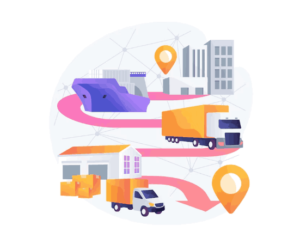
What are the Five Rs in Reverse Logistics?
The five Rs in reverse logistics encompass returns, reselling, repairs, repackaging, and recycling. Companies employ metrics for each of these alternatives to monitor progress and success. Examining the five Rs can help your business streamline its reverse logistics processes and minimize losses.
The significance of the five Rs in reverse logistics lies in maintaining an efficient flow of goods, reducing costs, adding value, mitigating risks, and completing the product life cycle. Businesses can benefit from a closer examination of these elements to enhance their reverse logistics operations.
According to Gartner Research, approximately 70% of businesses intend to invest in the “circular economy.” This circular economy extends beyond traditional logistics and follows a closed-loop supply chain, as defined by Gartner.
Circular Economy
In the business context, reverse logistics plays a pivotal role by enhancing customer satisfaction through efficient returns management, cutting down on waste and costs through recycling and reusing materials, and bolstering brand reputation by showcasing environmental responsibility. This approach signifies a shift toward a sustainable economy, where companies actively engage in finding new purposes for discarded products through recovery, repair, and recycling, thereby assigning value to materials that were once considered mere waste.
Participation in the circular economy also ensures compliance, as many countries implement policies compelling “producers” to adopt more sustainable practices. These guidelines encompass subsidies for waste prevention, research and development, and recycling initiatives. Furthermore, some policies impose restrictions on landfills, mandate the establishment of collection and recycling programs, and penalize certain wasteful practices.
How Does Reverse Logistics Add Value?
Reverse logistics generates value by converting discarded items into sales and fostering customer trust. Businesses engage in the resale, reuse, and recycling of returned products. Moreover, efficient reverse logistics contributes to minimizing storage and distribution costs.
According to Gartner Research, less than half of returned goods are resold at their original price, emphasizing the importance of determining the optimal disposition option for returned items. For instance, retail businesses like B-Stock specialize in reselling returned goods. B-Stock achieved sales of 70 million returned or excess goods in 2019 by purchasing returns at a percentage of their original cost and then selling them at a discounted rate to consumers.
Leveraging reverse logistics to enhance the efficiency of the traditional supply chain benefits all stakeholders. Some businesses opt to separate their forward and reverse logistics, while others integrate them. The success of combining these logistics approaches depends on factors such as the company’s expertise, the value of its products, and the volume of returns. Regardless of the chosen approach, businesses implement strategies to optimize profitability ratios in their supply chain activities. Explore expert tips on maximizing profits in business.
Strategies for Enhancing Reverse Logistics Efficiency
To enhance the efficiency of reverse logistics, companies must implement comprehensive strategies that prioritize speed, effectiveness, and cost considerations. When implementing these strategies, it is essential to focus on policies, partnerships, data utilization, capacity management, as well as logistics and transportation.
Here are seven strategic approaches to optimize reverse logistics:
Assess Pertinent Policies and Agreements
Thoroughly evaluate and update the procedures governing returns and repairs within your company. Ensure that these policies are transparent and address the root causes of returns and repairs. The way a company handles returns and repairs can serve as a competitive differentiator.
Foster Collaboration with Suppliers
Forge strong partnerships with suppliers to create a seamless, integrated experience for customers, avoiding a disjointed process that may be challenging for customers to navigate.
Harness Data for Process Optimization
Collect data on product returns to gain insights into the reasons behind customer returns. Utilize this information to make adjustments in sales strategies, product design, and forward logistics processes accordingly.
Monitor Product Movements in Both Directions
Establishing connections from raw materials to finished goods and customer orders enables effective tracking of ingredients. In the event of recalls, this approach allows for targeted recalls, pinpointing the specific issue instead of implementing recalls for entire product lines.
Centralized Return Processing Centers
The implementation of a centralized return center enhances the sorting and identification of products, enabling businesses to determine the most appropriate course of action for each item. If a dedicated return center is not feasible due to resource constraints, consider allocating a section of your warehouse or factory specifically for returns.
Evaluate Logistics and Transportation Processes
Regularly assess both forward and reverse logistics and transportation procedures. Explore the potential integration of certain processes and transit options. For instance, if delivery drivers can collect empty pallets while dropping off full ones, this can result in savings in terms of trips, time, and costs. Yard management with a WMS can help optimize these processes.
Implement Automation
Utilize cloud-based logistics software to streamline operations. This type of software can facilitate asset recovery tracking, manage refurbishment processes, and offer business intelligence analytics.
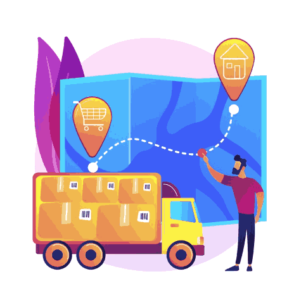
How Does Reverse Logistics Influence Supply Chain Management?
Reverse logistics presents a crucial opportunity for optimizing supply chain processes. Supply chain management encompasses both the forward and reverse flow of goods, and an influx of returns can lead to increased supply chain costs, negatively impacting profitability.
Distinguishing Reverse Logistics from Reverse Supply Chain:
Reverse supply chain denotes the backward movement of goods, such as defective products, from vendors back up the supply chain. This concept contrasts with the conventional supply chain, where items progress from manufacturer to retailer to consumer.
On the other hand, reverse logistics encompasses everything associated with product returns and the subsequent actions taken with those products after consumers return them. This includes planning and executing strategies to minimize costs and losses related to returns, ultimately enhancing the overall returns experience.
Monitoring Reverse Logistics in Your Supply Chain
Companies employ reverse logistics monitoring in the supply chain to explore more effective methods for handling and disposing of products. The intricate details regarding the movement of goods back and forth through the supply chain offer a wealth of information that assists companies in achieving their delivery objectives.
While some organizations aim for straightforward on-time delivery, others strive for what they term the “perfect order.” This entails attaining a flawless score across various aspects for every order, including place, time, condition, package, quantity, documentation, customer satisfaction, and invoicing. Achieving the perfect order requires continuous monitoring of data, setting metric targets, and refining processes based on the obtained results. Reverse logistics emerges as a central player in the pursuit of delivering the perfect order.
5 Crucial Metrics for Monitoring Reverse Logistics in the Supply Chain
There are five key metrics focused on reverse logistics within the supply chain that contribute to enhancing asset recovery. Utilizing supply chain analytics enables management to make informed, data-driven decisions at every stage of the supply chain.
Key metrics in the supply chain:
Volume: Tracking the volume of returned products and their subsequent resale, reuse, and recycling is a primary metric for monitoring reverse logistics. Utilizing these measurements helps companies identify missed opportunities or issues, enabling them to pinpoint areas for process improvements.
Percent of Costs: Evaluate the costs associated with resales, refurbishing, reuse, and recycling against the total supply chain cost. Analyze the discrepancy between the expenses incurred in these activities and the cost of returns. Calculate the percentage of expenses recovered per item.
Condition of Returned Products: Assess the condition of returned products, distinguishing between those suitable for immediate resale at full value and those requiring refurbishment before resale. For items needing work, explore alternative sales channels. For instance, consider selling refurbished electronics through different channels. Determine the cost of materials and labor to ascertain the full value. Examine the percentage of items directed to each sales channel and assess whether the company is recovering sufficient funds.
Financial Value: Recognize the economic value associated with each step in the supply chain. Understanding the financial stakes at each juncture facilitates the development of more efficient processes.
Errors: Identify potential errors at every stage of the supply chain, such as unaccepted deliveries or defective materials. Review the cost of these mistakes and their frequency to pinpoint areas for improvement and optimize overall efficiency.
Supply chain analytics should span the entire value chain, from material sourcing to distribution and delivery. Effective metrics contribute to revenue growth, improved profit margins, and prudent capital management. As supply chains increasingly embrace digital transformation, the process of collecting data becomes more streamlined. Explore the supply chain analytics guide to optimize the implementation of this practice.
The Evolving Landscape of Reverse Logistics
The future of reverse logistics revolves around minimizing disruptions caused by returns, a challenge particularly prominent in the growing realm of ecommerce and, to an increasing extent, in the retail sector. Companies can leverage reverse logistics to seamlessly integrate all aspects of the returns process.
A strategic approach to integration involves linking the product’s data to the appropriate handling procedures for staff. By documenting the fate of a returned product—whether it is slated for resale, repairs, or repurposing for raw materials—the supply chain can facilitate this cohesive integration. The future of reverse logistics envisions integrated supply chain management software capable of making these determinations and providing valuable reports.
Effectively Manage Reverse Logistics with Warehouse Management Software
Efficiently overseeing your reverse logistics is vital for the financial health and reputation of your business. Consumer trust hinges on the perception that they are purchasing products from companies with integrity. Enhancing your reverse logistics presents opportunities for implementing sustainable business practices.
This underscores the critical importance of having a Warehouse Management System (WMS) capable of handling both inbound and outbound logistics while providing real-time analytics. Businesses require comprehensive insights spanning transportation and logistics providers, warehouse and fulfillment operations, and seamless integration of this information with financial data in an Enterprise Resource Planning (ERP) system. Coupling ERP platforms with a Warehouse Management System like PALMS™ Smart WMS enables companies to effortlessly track returns, monitor goods movement, process credits through the accounting system, and update customer records.
Equally crucial is effective inventory management for efficient returns processes. A high rate of returns can lead to an accumulation of inventory, and a well-designed inventory management system will promptly alert you when inventory levels exceed the pace of sales.
With increasing awareness that returns constitute a significant expense, many companies are closely examining their reverse logistics to identify opportunities for recovering more value from returned goods. Additionally, the surge in return rates underscores the urgency for businesses to find cost-effective methods for handling returned products. Evaluating reverse logistics processes to identify inefficiencies and rectify shortcomings not only reduces costs but also enhances customer loyalty and bolsters brand reputation, contributing positively to the bottom line.
30/01/2024

